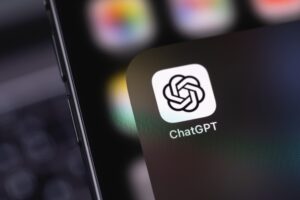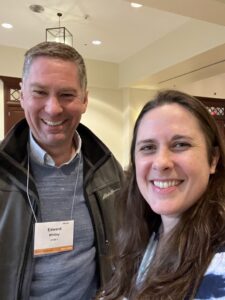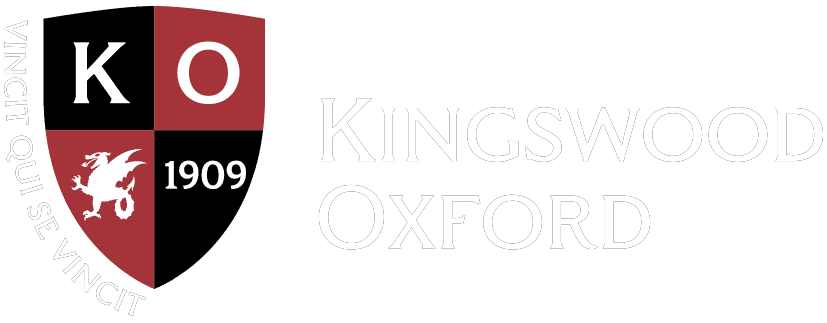January 27, 2025
Exploring AI in the Classroom
Rachel Heffner-Burns, Upper School English teacher, brings her expertise and passion for teaching into her roles as an AP Language and Composition teacher and instructor of senior electives and theses. This year, she had the unique opportunity to present her innovative work at the Modern Language Association (MLA) Conference in New Orleans, an experience that blended her love for teaching with her enthusiasm for research and scholarly dialogue.
Heffner-Burns described the MLA Conference as a refreshing dive back into the academic world of research and collaboration. She noted that her interest was piqued by a K-12 panel—a rarity at a conference typically dominated by higher education topics. This panel provided a platform to explore intersections between high school and higher education pedagogy. Inspired, Hffener-Burns submitted a proposal to discuss the use of generative AI in an AP Language classroom, a timely and essential topic as AI becomes an increasingly influential tool in education. Her proposal was accepted, leading to her attendance at the conference with full financial support from KO.
“I’m so grateful for the funding and the willingness to invest in faculty engaging with the wider community,” Heffner-Burns shared. This institutional support extended beyond financial aid, as Burns was subsequently invited to lead Kingswood Oxford’s generative AI working group in the Upper School.
Over the summer, Heffner-Burns conducted extensive research to understand AI’s capabilities, limitations, and ethical implications. She designed a two-part lesson for her AP Language and Composition students that used generative AI as a teaching tool. The goal? To help students critically evaluate AI’s functionality while honing their own rhetorical analysis skills.
Heffner-Burns began by surveying her students to gauge their understanding of generative AI, their past usage, and their thoughts on its role in education and future professions. Drawing from surveys used by the Scottish Government and refining them with ChatGPT, she crafted a nuanced questionnaire. The data collected served as a foundation for subsequent lessons.
The lesson’s core focused on rhetorical analysis, a challenging component of the AP Lang curriculum. After students completed a foundational unit on analyzing speeches and essays, Heffner-Burns introduced them to Malala Yousafzai’s speech to the UN Youth Assembly. Students independently annotated the speech, identifying rhetorical strategies, audience appeals, and tone shifts. In small groups, they discussed their findings and outlined their interpretations.
Next, Heffner-Burns introduced generative AI. Each group input the speech into ChatGPT, crafting their own prompts to analyze the text. The AI’s output varied, ranging from brief paragraphs to detailed essays. Students compared the AI’s analyses to their own, evaluating its accuracy, depth, originality, and responsiveness to the prompt. Using tools like Padlet, groups shared their findings, sparking rich discussions about the strengths and limitations of AI-generated content.
The project revealed both the potential and the pitfalls of generative AI. While students appreciated the AI’s ability to organize ideas and identify rhetorical strategies quickly, they also noted its inability to fully capture emotional nuance, tone shifts, or the deeper psychological impacts of the speech. For example, some groups highlighted Malala’s humility and connection to her audience—elements the AI struggled to articulate convincingly.
Students also reflected on the ethical implications of AI. Discussions touched on the biases embedded in AI training data, the environmental costs of large-scale computing, and the challenges of ensuring ethical usage. Heffner-Burns plans to expand these conversations in future lessons, incorporating more in-depth discussions about AI’s societal impacts.
Heffner-Burns emphasized that generative AI, while not a substitute for human creativity and critical thinking, can serve as a valuable collaborator. “I see my role as a teacher to help students engage in authentic conversations about this technology,” she explained. “AI can be a thought partner, supporting their learning without supplanting it.”
She also highlighted how AI has supported her own teaching practice. From generating lesson plan ideas to brainstorming catchy titles, Heffner-Burns uses AI as a brainstorming tool to lighten her mental load. However, she cautions against relying on AI uncritically, noting the importance of refining its outputs through thoughtful feedback.
Heffner-Burns plans to refine and expand her AI lessons, potentially extending the project to three or four days to allow for deeper exploration of ethical considerations and creative applications. She believes it’s essential to prepare students to navigate a world where AI is ubiquitous, helping them use the technology responsibly and thoughtfully.
Reflecting on her experience at the MLA Conference, Heffner-Burns expressed gratitude for the opportunity to share her work and learn from others in the field. “This technology exists and is becoming ever more pervasive. It’s our job to ensure that students understand its implications and use it in ways that enhance, rather than undermine, their learning and creativity.”
By combining innovative pedagogy with ethical inquiry, Heffner-Burns is equipping her students to become thoughtful, informed participants in an AI-driven world.
Photo: Heffner-Burns and Dr. Ed Whitley, a professor and chair of the English Department at Lehigh University and her former dissertation advisor. They connected on the morning of her presentation at the MLA Conference. 
